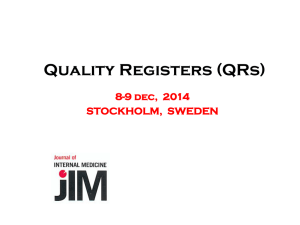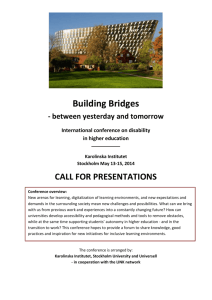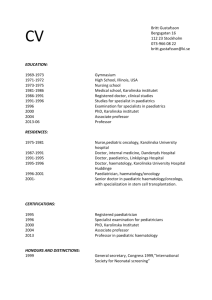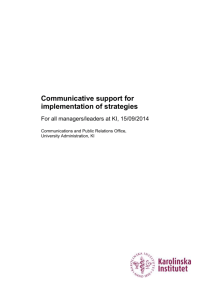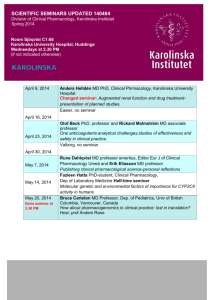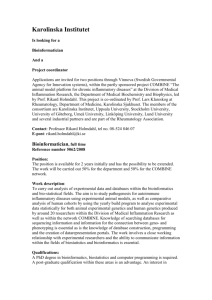Organizational role stress among medical school faculty members in
advertisement
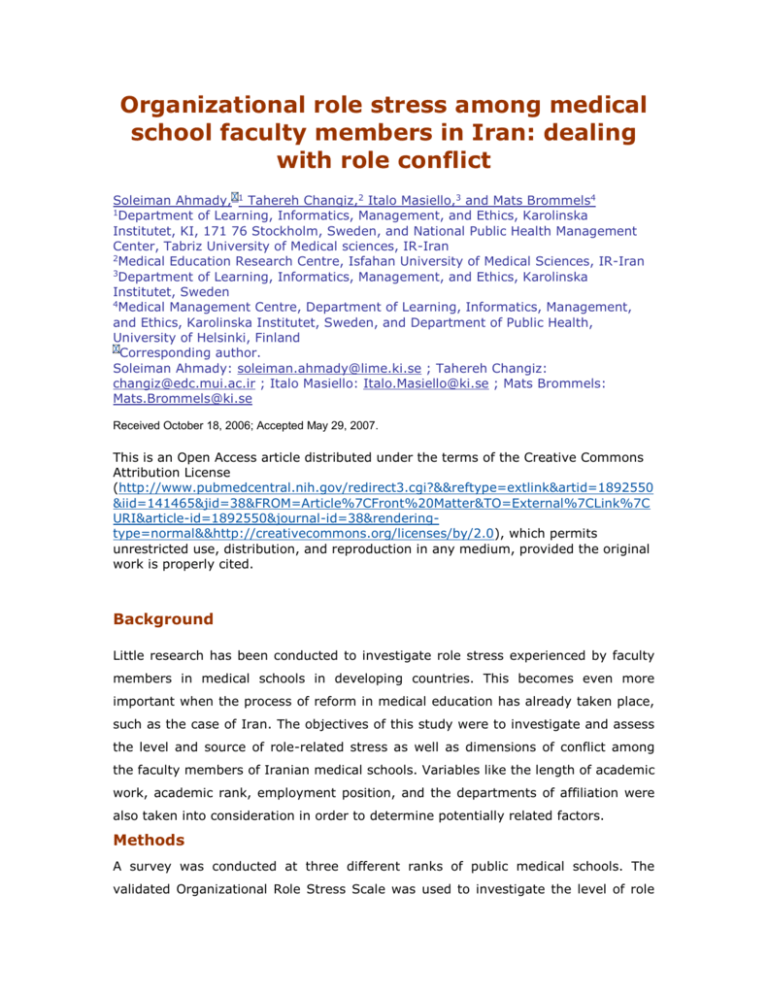
Organizational role stress among medical school faculty members in Iran: dealing with role conflict Soleiman Ahmady, 1 Tahereh Changiz,2 Italo Masiello,3 and Mats Brommels4 1 Department of Learning, Informatics, Management, and Ethics, Karolinska Institutet, KI, 171 76 Stockholm, Sweden, and National Public Health Management Center, Tabriz University of Medical sciences, IR-Iran 2 Medical Education Research Centre, Isfahan University of Medical Sciences, IR-Iran 3 Department of Learning, Informatics, Management, and Ethics, Karolinska Institutet, Sweden 4 Medical Management Centre, Department of Learning, Informatics, Management, and Ethics, Karolinska Institutet, Sweden, and Department of Public Health, University of Helsinki, Finland Corresponding author. Soleiman Ahmady: soleiman.ahmady@lime.ki.se ; Tahereh Changiz: changiz@edc.mui.ac.ir ; Italo Masiello: Italo.Masiello@ki.se ; Mats Brommels: Mats.Brommels@ki.se Received October 18, 2006; Accepted May 29, 2007. This is an Open Access article distributed under the terms of the Creative Commons Attribution License (http://www.pubmedcentral.nih.gov/redirect3.cgi?&&reftype=extlink&artid=1892550 &iid=141465&jid=38&FROM=Article%7CFront%20Matter&TO=External%7CLink%7C URI&article-id=1892550&journal-id=38&renderingtype=normal&&http://creativecommons.org/licenses/by/2.0), which permits unrestricted use, distribution, and reproduction in any medium, provided the original work is properly cited. Background Little research has been conducted to investigate role stress experienced by faculty members in medical schools in developing countries. This becomes even more important when the process of reform in medical education has already taken place, such as the case of Iran. The objectives of this study were to investigate and assess the level and source of role-related stress as well as dimensions of conflict among the faculty members of Iranian medical schools. Variables like the length of academic work, academic rank, employment position, and the departments of affiliation were also taken into consideration in order to determine potentially related factors. Methods A survey was conducted at three different ranks of public medical schools. The validated Organizational Role Stress Scale was used to investigate the level of role stress and dimensions of role conflict among medical faculty members. The response rate was 66.5%. Results The findings show that role stress was experienced in high level among almost all faculty members. All three studied medical schools with different ranks are threatened with relatively the same levels of role stress. Specific differences were found among faculty members from different disciplines, and academic ranks. Also having permanent position and the length of services had significant correlation with the level of role stress. The major role- related stress and forms of conflict among faculty members were role overload, role expectation conflict, inter-role distance, resource inadequacy, role stagnation, and role isolation . Conclusion The most role-related stressors and forms of conflict among faculty members include too many tasks and everyday work load; conflicting demands from colleagues and superiors; incompatible demands from their different personal and organizational roles; inadequate resources for appropriate performance; insufficient competency to meet the demands of their role; inadequate autonomy to make decision on different tasks; and a feeling of underutilization. The findings of this study can assist administrators and policy makers to provide an attractive working climate in order to decrease side effects and consequences of role stress and to increase productivity of faculty members. Furthermore, understanding this situation can help to develop coping strategies in order to reduce role-related stress.
